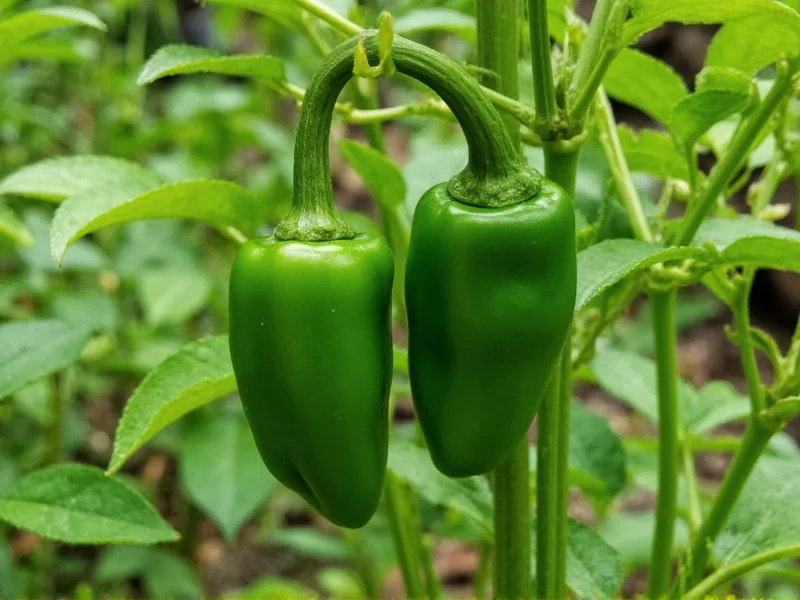Understanding where jalapeños fall on the Scoville scale helps cooks and spice enthusiasts make informed decisions about their heat tolerance and culinary applications. The Scoville scale, developed by pharmacist Wilbur Scoville in 1912, measures the pungency or spiciness of chili peppers and other spicy foods by quantifying the concentration of capsaicinoids, primarily capsaicin.
Understanding Jalapeño Heat Range
While the standard range for jalapeños is 2,500-8,000 SHU, several factors can cause significant variation in individual peppers. This explains why you might experience dramatically different heat levels between jalapeños from the same plant or even the same grocery store batch.
| Pepper Type | Scoville Heat Units (SHU) | Heat Level |
|---|---|---|
| Jalapeño | 2,500-8,000 | Mild to Medium |
| Serrano | 10,000-23,000 | Medium to Hot |
| Habanero | 100,000-350,000 | Very Hot |
| Bell Pepper | 0 | None |
| Ghost Pepper | 855,000-1,041,427 | Extremely Hot |
Factors That Influence Jalapeño Heat Levels
Several environmental and biological factors affect the actual heat of your jalapeños:
Growing Conditions
Stressful growing conditions actually increase capsaicin production. Jalapeños grown in hotter climates, with less water, or in nutrient-poor soil tend to be significantly hotter than those grown in ideal conditions. This explains regional variations in jalapeño heat levels across different growing areas.
Ripeness and Color
As jalapeños mature and change color from green to red, their heat level increases. Red jalapeños are typically hotter than their green counterparts because they've had more time to develop capsaicin. The red versions also develop more complex flavors while maintaining their characteristic jalapeño taste profile.
Seed and Rib Content
The white ribs (pith) and seeds contain the highest concentration of capsaicin. Removing these parts significantly reduces the heat level when preparing jalapeños for cooking. Many professional chefs recommend keeping some of the ribs for flavor while removing seeds for heat control.
Practical Implications for Cooking
Knowing the jalapeño scoville rating helps in recipe planning and substitution. For those sensitive to spice, jalapeños offer a manageable heat level that provides flavor without overwhelming burn. When substituting jalapeños in recipes, consider these equivalents:
- For milder heat: Use poblano peppers (1,000-2,000 SHU)
- For similar heat: Serrano peppers work well but use fewer (typically 1 serrano = 2 jalapeños)
- For hotter applications: Consider adding a small amount of cayenne or habanero
Common Misconceptions About Jalapeño Heat
Several myths persist about determining jalapeño heat levels. Contrary to popular belief, the number of 'corking' lines (streaks on the pepper) doesn't reliably indicate heat level, though it may suggest maturity. Similarly, smaller jalapeños aren't consistently hotter than larger ones - heat variation occurs within the same plant.
Another common misunderstanding involves the effect of cooking on heat. While cooking doesn't destroy capsaicin, it does cause the compound to distribute more evenly throughout a dish. Adding dairy products like yogurt or sour cream provides immediate relief from capsaicin burn, as the casein protein binds to capsaicin molecules.
Measuring Heat Beyond the Scoville Scale
Modern laboratories now use High-Performance Liquid Chromatography (HPLC) to measure capsaicinoid content more precisely than the original Scoville Organoleptic Test, which relied on human tasters. This scientific method provides exact measurements that can be converted to Scoville units, giving more accurate jalapeño scoville heat units for research and commercial purposes.
Despite these advances, the Scoville scale remains the most widely recognized measurement for consumers, making it valuable for understanding jalapeno scoville rating in everyday cooking contexts. When following recipes that specify jalapeño heat levels, remember that actual heat can vary significantly based on the factors we've discussed.
What is the average scoville rating for a typical jalapeño pepper?
The average jalapeño pepper measures approximately 5,000 Scoville Heat Units, though individual peppers can range from 2,500 to 8,000 SHU. This places them solidly in the mild to medium heat category, making them accessible to most palates while still providing noticeable spice.
Why do some jalapeños taste much hotter than others?
Variation in jalapeño heat comes from multiple factors including growing conditions (stress increases heat), ripeness (red jalapeños are hotter than green), and even the specific part of the pepper you consume. The seeds and white ribs contain the highest concentration of capsaicin, so peppers prepared with these parts intact will taste significantly hotter.
How does the jalapeño scoville scale compare to other common peppers?
Jalapeños (2,500-8,000 SHU) are significantly milder than habaneros (100,000-350,000 SHU) but hotter than poblanos (1,000-2,000 SHU). They're about 2-5 times hotter than serranos, which explains why recipes often call for fewer serranos when substituting for jalapeños. Understanding these jalapeno scoville scale comparisons helps in proper spice management for cooking.
Can I reduce the heat of jalapeños before using them in recipes?
Yes, you can significantly reduce jalapeño heat by removing the seeds and white ribs (pith), which contain the highest concentration of capsaicin. Soaking sliced jalapeños in salt water or milk for 15-30 minutes can also draw out some capsaicin. For maximum heat reduction, combine both methods while preserving the pepper's distinctive flavor.
Do red jalapeños have a different scoville rating than green ones?
Yes, red jalapeños typically measure higher on the scoville scale than green ones. As jalapeños mature and turn from green to red, they develop more capsaicin, resulting in increased heat. Red jalapeños often reach the upper end of the 2,500-8,000 SHU range, while green ones tend to be milder. The red varieties also develop more complex, slightly sweeter flavors alongside the increased heat.











 浙公网安备
33010002000092号
浙公网安备
33010002000092号 浙B2-20120091-4
浙B2-20120091-4